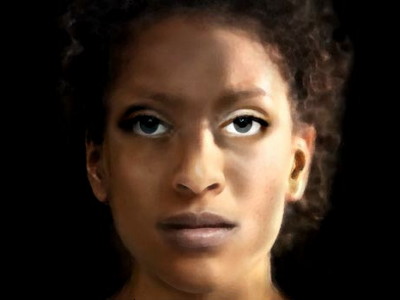Evidence that ancient settlements welcomed 'another race with the habit of deforming the skull' is discovered

There are many undocumented changes in the ancient culture, but it is a mystery, but by analyzing the remains of the turbulent period when ancient Rome came to an end, the custom of 'deforming the head' was established. It has become clear that the villages have accepted the different ethnic groups that they have and that culture has been incorporated.
Coalescing traditions--Coalescing people: Community formation in Pannonia after the decline of the Roman Empire
This Hungarian Village Welcomed Skull-Shaping Immigrants as The Roman Empire Crumbled
https://www.sciencealert.com/this-hungarian-village-welcomed-skull-shaping-immigrants-as-the-roman-empire-crumbled
Ancient Rome began in 753 BC and ended in 476 with the appointment of Romulus Augustus . During this period, the power balance between the Western and Eastern Roman empires changed significantly, and although it is not well documented, it is thought that cultural changes also occurred.
However, researchers who were investigating Panonia Valeria, one of the modern states of the Roman Empire in modern Hungary, evidence from the remains of the cemetery how people at the time accepted cultural changes I have found
A team of archaeologists from Germany and Hungary analyzed strontium isotopes from 87 ashes. Stable isotopes such as strontium are taken up by plants from soil. When humans eat this plant, strontium replaces some of the calcium contained in teeth and bones. By comparing with the data of the area with a specific isotope ratio, the time and place where the owner of the ashes lived can be inferred.
Using this technique, a team of researchers has identified the remains found in Hungary's 'Mözs-Icsei dűlő' archaeological site as belonging to people who lived in three regions for a few generations.
The remains of the earliest group belonged to the 'small founder group' and were buried in a Roman stone tomb with burial items of Roman and Hun style. The isotope ratios of these remains were in agreement with the local diet.

However, 12 of the remains are believed to be foreign groups that arrived in the community decades after the founder group broke out. Since the remains of 12 people have almost the same isotope ratio, they are said to have the same origin. Deformation of the skull was observed in 10 out of 12, and it is thought that this was intentionally deformed by tightly winding the head with a cloth in infancy.
Skull do not know what customs have been why made that the intentionally deformed, but similar customs in the world and dating back to thousands of years ago
And in the third-generation group, there were signs that the customs of founder groups and foreign groups were blended. The graves and burial items had a head deformation while following the style of the founder group.

Researchers have found in the past findings that the customs of deforming skulls reported around the world may be a 'mark of social status,' 'for the protection of the head of soft children,' or 'visual appearance.' It is due to various reasons such as “goodness”. It is not clear what the reason for the deformation of the ashes found in Hungary is, but it is an example of a community born and prospering in the midst of regional conflicts, combining the differences to create a new one. Can be said.
“The community has been accepting and integrating men, women and children with different regional and cultural backgrounds over a couple of generations.” “Historically, this is Rome and the Barbarian. It is understood as the emergence of a cultural mix, but Romanized 'barbarians' and barbarized 'Romanians' are indistinguishable, 'the researchers say.
Related Posts:
in Note, Posted by darkhorse_log







